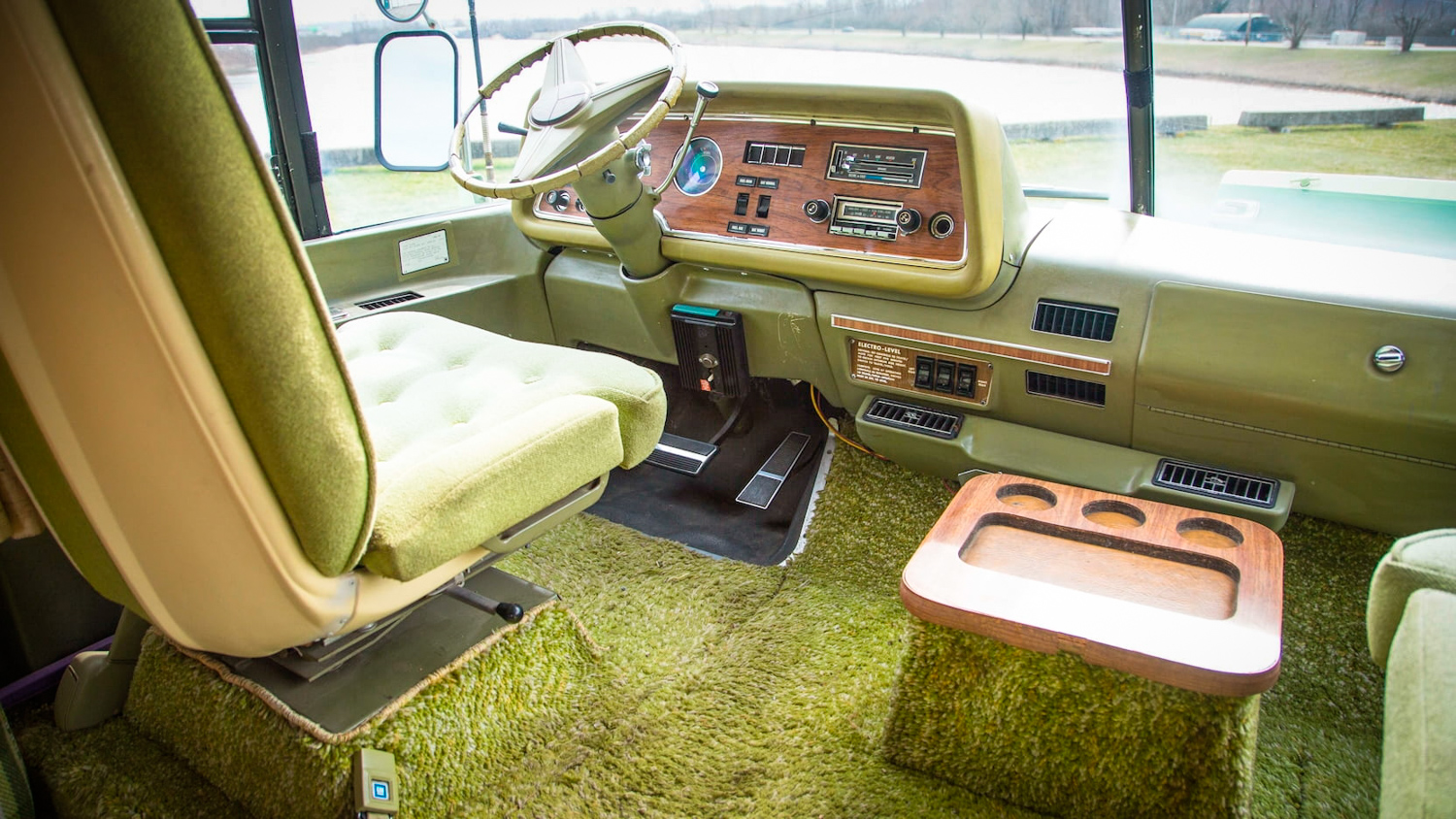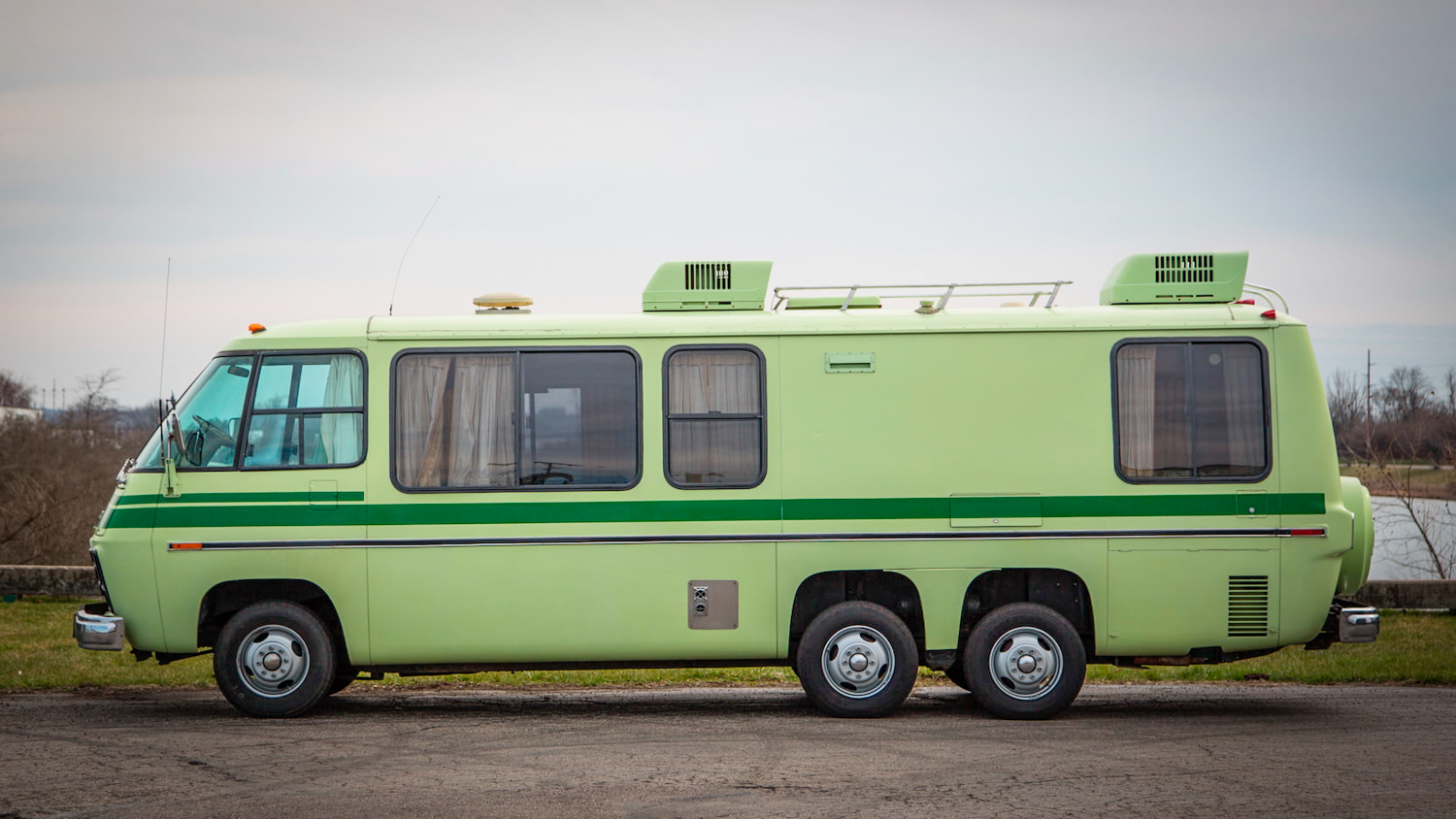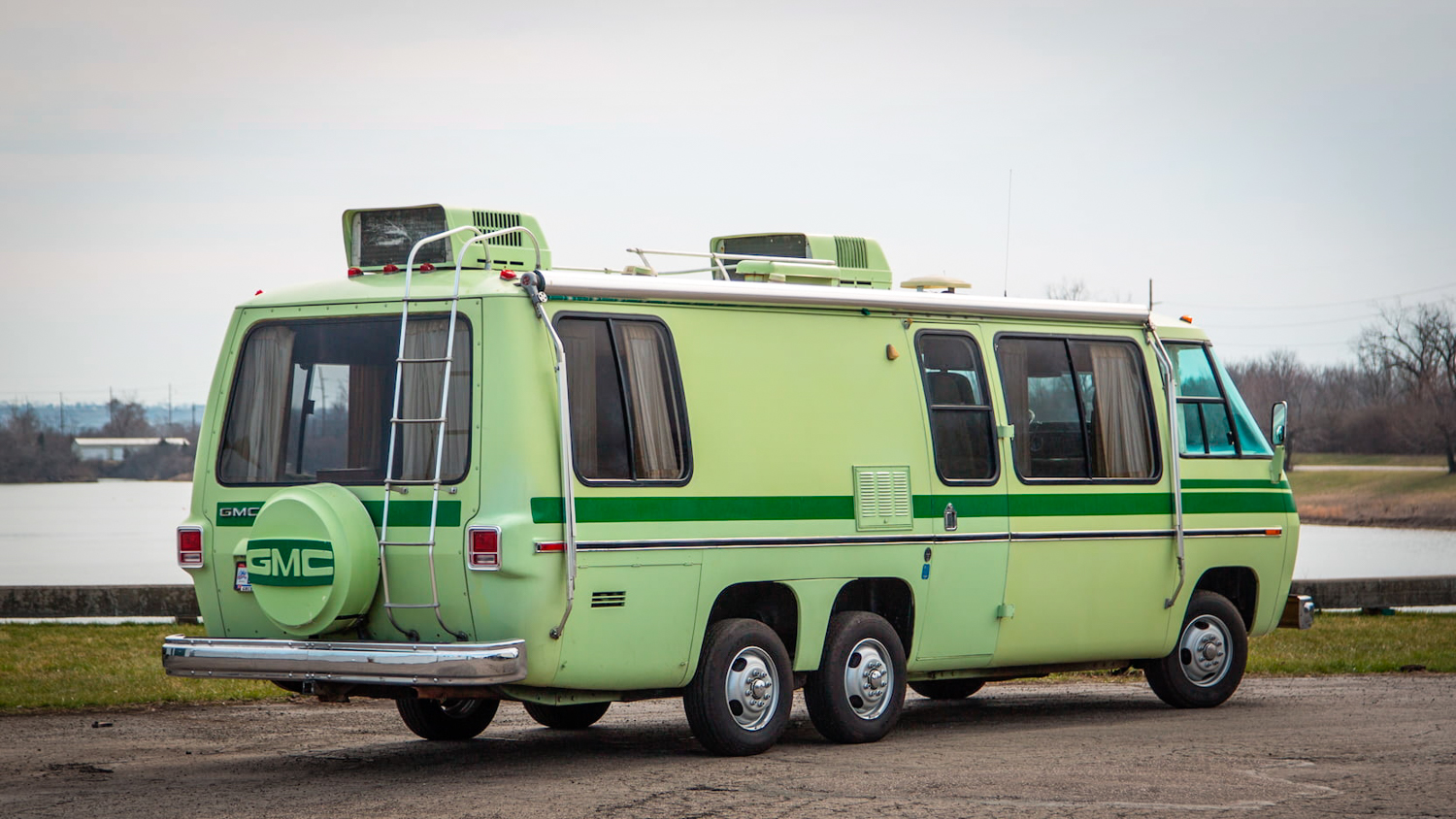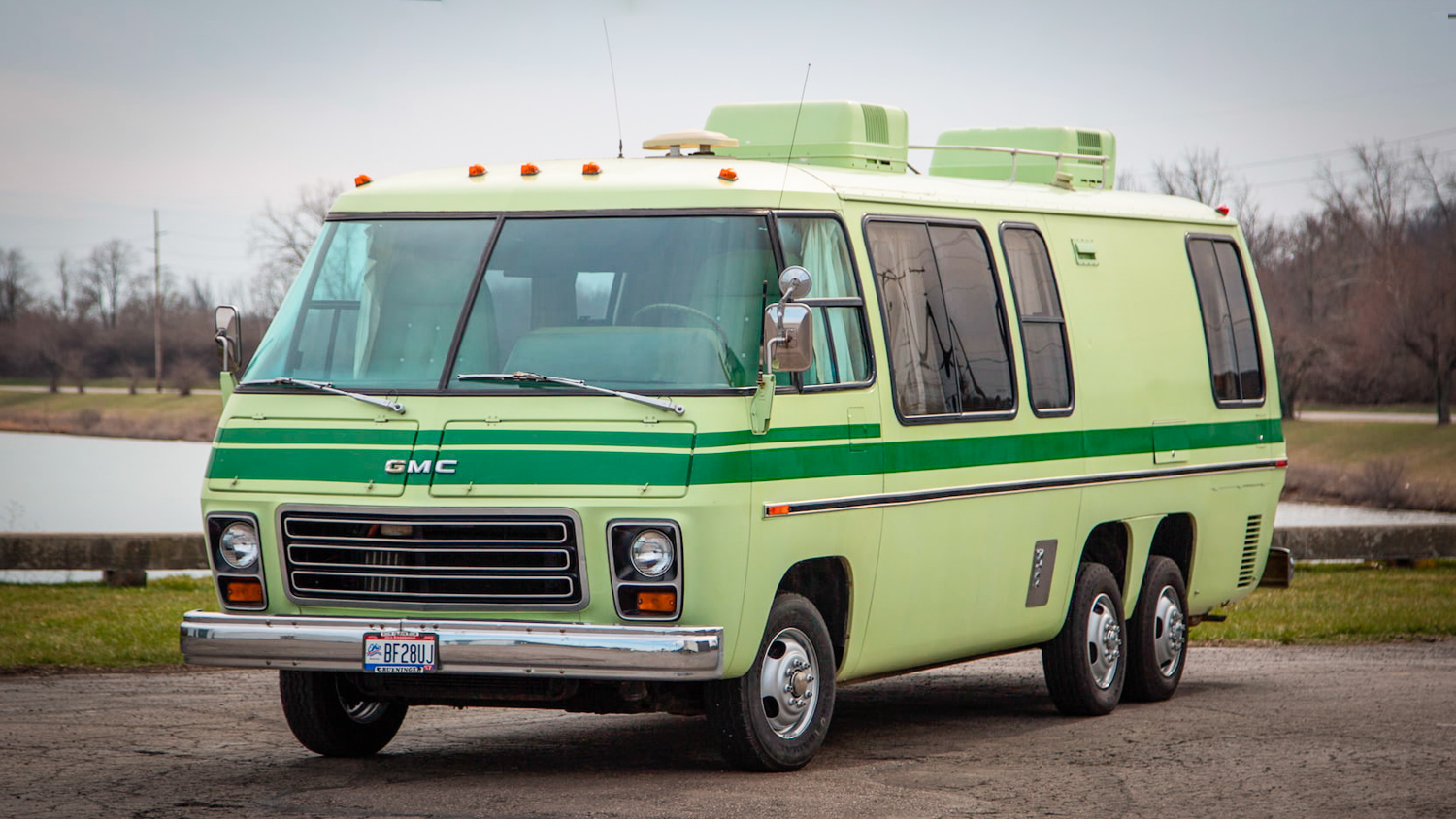The 1972–78 GMC motorhome is a front-wheel-drive wonder
First, we had tents. Travel trailers followed. Vans arrived on the scene, combining the tow vehicle and the living space. Finally, there was the motorhome. GMC’s take on the formula was a wild combination of technology that allowed people to explore the countryside without leaving the comfort of their living room. Literally.
A motorhome is pretty simple in concept—place living quarters on a truck chassis. The typical example, however, often joins the worst features of both ‘motor’ and ‘home’ in a single, hard-to-drive, impossible-to-fix package.
GMC joined the motorhome market in 1972 with the…Motorhome. While the name was not adventurous, the design and construction was far from ordinary. Sold in 23 and 26-foot lengths, the chassis utilized front-wheel-drive technology and the body was molded fiberglass. To say it plainly, the GMC motorhome had flair in a market filled with boxes on wheels.




Why front-wheel-drive? Let’s start with the “how”: GM leveraged its experience from the Oldsmobile Toronado and Cadillac Eldorado to create the engine layout. The vast majority of production used the Toronado-spec 455-cubic-inch Olds V-8, with final-year examples downsized to a 402ci mill. Regardless of size, the V-8 was mounted longitudinally with the transmission mounted alongside rather than behind. A large chain drive connected the two. The power split at the transmission and was carried to the wheels by axles that were actually ahead of the engine. Installation was simple, which mattered because the GMC, unlike all of its competition, was built using modern automotive assembly practices.
The drivetrain occupied just the front eight feet of the chassis, allowing the living quarters to have a lower floor. In fact, it was just 14 inches off the pavement. The roof height was reduced to match, creating a sleek package. Due to the rear axle only needing to support weight and not drive the wheels, the rear suspension was placed outside the frame rails, eliminating the step up at the rear of many contemporary motorhomes. The rear suspension used air bags and featured automatic leveling both on the move and while parked.

All the tech under the skin was neat, but the skin itself should not be overlooked. GM used experience from the Corvette to create a fiberglass and aluminum body. It was common in motorhomes to use wood framing, similar to non-mobile homes, so water leaks resulted in expensive rot repair. GMC motorhomes stand the test of time much more elegantly than others in this regard; only the floor is made from wood.
Production closed in 1978. With oil embargoes and gas shortages, the market for homes on wheels temporarily dried up. But the love for this piece of GMC innovation has not. Since the powertrain is shared with a common production car, parts acquisition for repairs and maintenance is simple as ordering parts for a mid-‘70s Toronado. Double-digit gas mileage, even while flat towing a car behind, makes it efficient enough to continue running in modern times. Active owner’s groups are supportive and welcoming to new owners. Could this six-wheel marvel be your ticket to cross-country adventure? It certainly beats a tent!




Looking for a great re-furnished 1978 GMC RV
Please send me pictures of any units you have with address and phone numbers so I can contact them, I would love to have one
I am 80 years Old and in good shape and work daily. Can work on unit .We live in GA close to Augusta